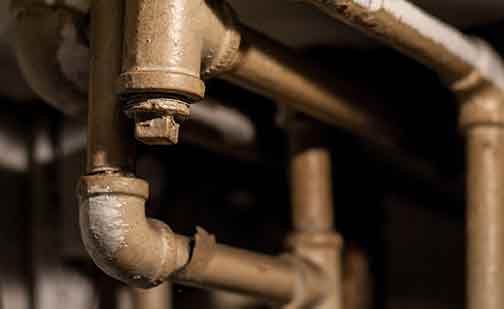Plumbing Problems in Older Homes – An older house often means more work for its owner than a recently built one. Their systems and structures have seen more use than a new house. Therefore, you can expect more wear and tear on an older home than a new building.
As the owner of that older home, you must be aware of the greater risk of damage to the components of your home, says Property Plus USA. Having this knowledge and taking the appropriate steps to preserve the features of your home will let you get more use out of them and protect your wallet.
One of the systems of your home where you are most likely to experience trouble is with the plumbing. Ordinarily, the plumbing system in your home is one of the highest used, but when you add age to the equation, you can expect a lot of problems with this component of the house.
What are the plumbing issues you should expect as your home gets older?
Common plumbing problems in older homes
Outdated piping
Depending on the era the home was built, it could have one of these defective piping materials; lead, galvanized steel, or polybutylene. Lead was popular in homes until its ban in 1986. Galvanized steel, which replaced lead, was highly corrosive and later fell out of favor. The last material on the list – polybutylene – was not discovered to be defective until the early ‘90s. If your home was built during the periods when these materials were actively in vogue, they are still part of your plumbing system.
Worn-out and outdated fixtures/connections
The faucets, fixtures, and connections in your home may also have issues since most of them will be nearing or past their projected lifespan. One of the problems you will notice with worn-out fixtures is restricted water flow due to corrosion. Some of these issues may not be obvious because they happen gradually over time, and you may have become accustomed to how the fixtures function.
Issues with piping
You may experience the following problems with the pipes in your home:
Corrosion: Several older homes have metal pipes (galvanized steel and copper pipes) instead of PVC pipes popular in modern homes. These metal pipes corrode effortlessly. The chances that some of your plumbing pipes have rust are very high, and this is often evident in the number of leaks you have in the home. Metal pipes also make the water flowing through your home unsafe for drinking.
Pipe bellies: This problem results from movements in the soil surrounding underground piping. Gradual movements beneath your home – which is typical and often unnoticed – can force pipes to move upwards, sideways, or downwards. Sometimes these movements are severe enough to restrict the flow of water or stop it altogether. This problem can also cause leaks in water and sewer lines.
Leakages: Pipe leakages are also common in older homes due to the piping materials fitted in the homes. Polybutylene, for instance, tends to weaken over time. This piping material is easily-damaged by continuous exposure to water. If the pipes in your home are polybutylene or metal, you can expect to see a lot of leaks.
Low water pressure
Corroded old pipes clogged with deposits will reduce the water pressure in your home due to the smaller diameter of the pipes. Low water pressure will make simple everyday tasks like taking a shower or using home appliances – dishwasher and washing machine – difficult.
Tree root intrusion and sewer line issues
If the house is old, it is more likely that any trees in the yard have been there for a long time. Tree roots that have established themselves can easily damage underground piping. Typically, the roots seek out the pipes to get the nutrient-rich water inside them, but this mostly happens when a pipe is already leaking. Other times, tree roots may grow over or beneath a pipe and dislodge it. That may eventually cause the sewer line to leak, resulting in more tree roots growing in that part of the soil. Tree root intrusion leading to sewer line issues is widespread with old houses. Fixing this problem and generally working in your garden will also increase the value of your home.
Clogged drains
The common causes of clogged drains are food particles, grease & oil, hair, and soap scum. These may not cause problems in the short term, but over time, the continuous deposit of these materials inside the drains can increase the incidence of clogs. The probability of drains getting blocked also increases with rusty pipes in the plumbing system. Rusty pipes contain deposits that encourage the formation of clogs.
Improper installation
The probability of the existence of badly executed repairs and installations increases with the age of your plumbing system. That depends on how many people have worked on the plumbing, particularly when amateur plumbers meddle with the plumbing. A single terrible installation may not cause you problems, but the cumulative effect of several bad jobs done over some time can create serious issues.
